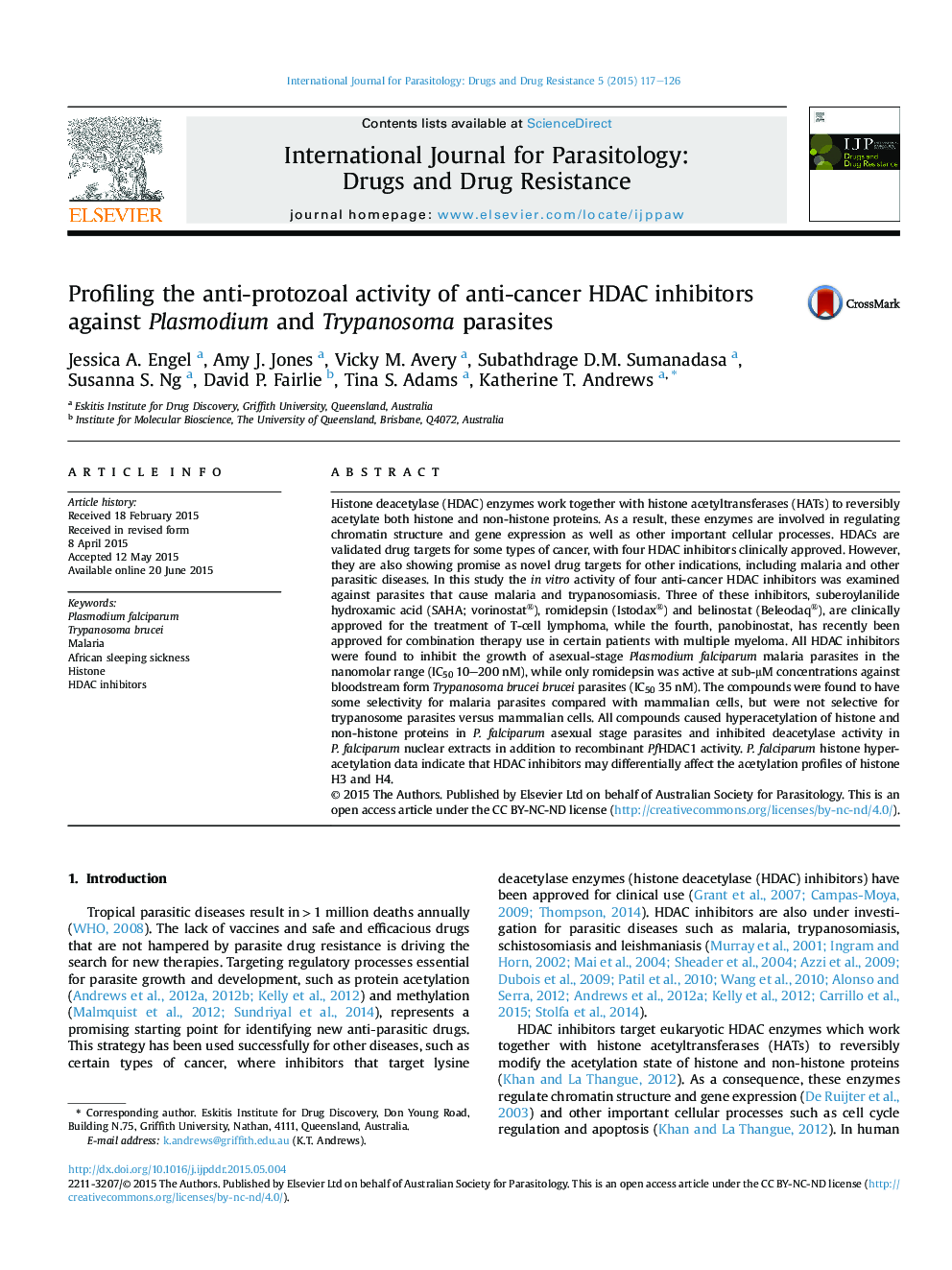| کد مقاله | کد نشریه | سال انتشار | مقاله انگلیسی | نسخه تمام متن |
|---|---|---|---|---|
| 2054750 | 1075693 | 2015 | 10 صفحه PDF | دانلود رایگان |

• Four clinically approved anti-cancer HDAC inhibitors potently inhibited P. falciparum.
• Only one, Romidepsin, was active against T. b. brucei parasites.
• All compounds hyperacetylated histone and non-histone proteins in P. falciparum.
• Some differential effects on Plasmodium histone acetylation were observed.
• All compounds inhibited Plasmodium nuclear deacetylase activity and PfHDAC1.
Histone deacetylase (HDAC) enzymes work together with histone acetyltransferases (HATs) to reversibly acetylate both histone and non-histone proteins. As a result, these enzymes are involved in regulating chromatin structure and gene expression as well as other important cellular processes. HDACs are validated drug targets for some types of cancer, with four HDAC inhibitors clinically approved. However, they are also showing promise as novel drug targets for other indications, including malaria and other parasitic diseases. In this study the in vitro activity of four anti-cancer HDAC inhibitors was examined against parasites that cause malaria and trypanosomiasis. Three of these inhibitors, suberoylanilide hydroxamic acid (SAHA; vorinostat®), romidepsin (Istodax®) and belinostat (Beleodaq®), are clinically approved for the treatment of T-cell lymphoma, while the fourth, panobinostat, has recently been approved for combination therapy use in certain patients with multiple myeloma. All HDAC inhibitors were found to inhibit the growth of asexual-stage Plasmodium falciparum malaria parasites in the nanomolar range (IC50 10–200 nM), while only romidepsin was active at sub-μM concentrations against bloodstream form Trypanosoma brucei brucei parasites (IC50 35 nM). The compounds were found to have some selectivity for malaria parasites compared with mammalian cells, but were not selective for trypanosome parasites versus mammalian cells. All compounds caused hyperacetylation of histone and non-histone proteins in P. falciparum asexual stage parasites and inhibited deacetylase activity in P. falciparum nuclear extracts in addition to recombinant PfHDAC1 activity. P. falciparum histone hyperacetylation data indicate that HDAC inhibitors may differentially affect the acetylation profiles of histone H3 and H4.
Figure optionsDownload as PowerPoint slide
Journal: International Journal for Parasitology: Drugs and Drug Resistance - Volume 5, Issue 3, December 2015, Pages 117–126